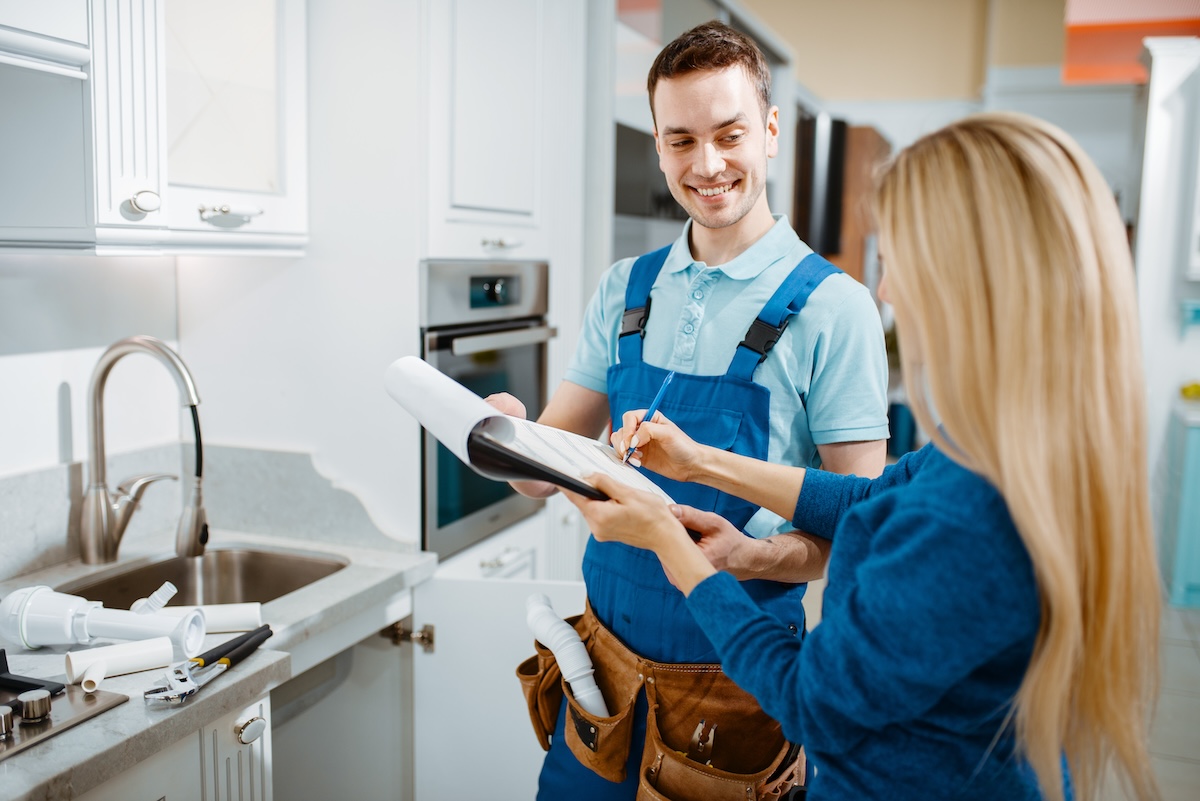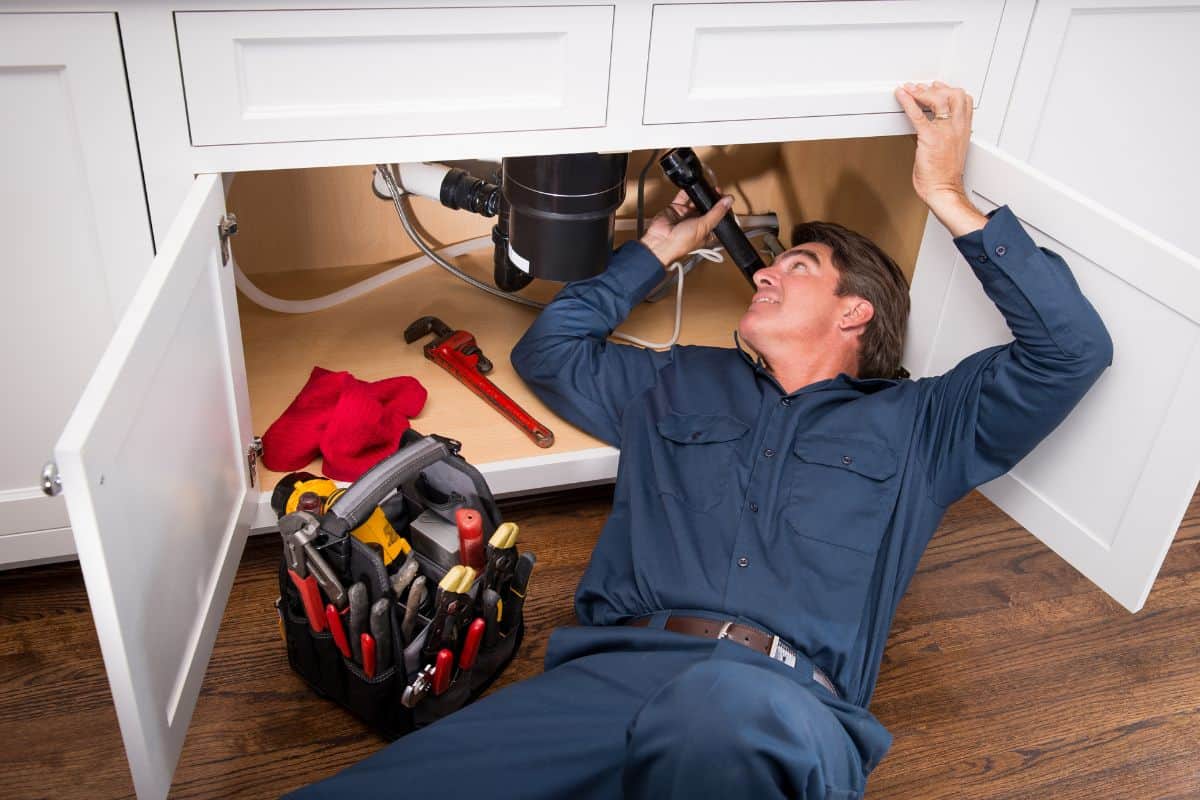We have stumbled upon this great article on 7 Plumbing Industry Trends You Need To Know directly below on the net and reckoned it made sense to share it with you on this page.

Intro
The pipes industry is undergoing a transformative phase driven by technological improvements and growing concerns for sustainability and performance. This article discovers emerging fads and advancements forming the future of pipes.
Smart Pipes Systems
Integrating wise innovation right into plumbing systems makes it possible for remote tracking, leakage detection, and automated maintenance. Smart sensing units and IoT (Web of Things) devices allow homeowners and plumbings to keep track of water use and identify concerns in real-time, causing much more reliable source management and positive maintenance.
Water Efficiency Solutions
With boosting emphasis on water preservation, cutting-edge solutions are being developed to minimize water wastage in pipes systems. High-efficiency fixtures, greywater recycling systems, and wise watering controllers are among the technologies aiding customers decrease their water impact while keeping convenience and ease.
Sustainable Products
The shift towards sustainability encompasses pipes products, with an expanding preference for green options. Eco-friendly piping materials, such as PEX (cross-linked polyethylene) and HDPE (high-density polyethylene), offer longevity and resistance to rust without endangering ecological integrity.
Anticipating Upkeep
Anticipating upkeep techniques take advantage of information analytics and machine learning algorithms to prepare for and protect against pipes issues before they take place. By examining historical information and efficiency metrics, predictive upkeep algorithms can recognize patterns and abnormalities, enabling aggressive interventions to stay clear of expensive fixings and interruptions.
Increased Truth in Pipes
Augmented Truth (AR) modern technology is changing plumbing by offering technicians with real-time visual support for repairing and fixing tasks. AR-enabled clever glasses or mobile applications overlay digital information onto the physical environment, assisting plumbing professionals visualize pipeline layouts, determine hidden leakages, and perform fixings with accuracy.
Impact of 3D Printing
The development of 3D printing has presented new opportunities in manufacturing pipes components. From custom-made fixtures to detailed pipeline fittings, 3D printing enables rapid prototyping and on-demand production, reducing lead times and allowing better personalization in plumbing style.
Health and Safety Features
In reaction to increased problems for health and wellness, plumbing fixtures are including attributes such as antimicrobial surface areas, touchless procedure, and self-cleaning systems. These innovations not just boost health but also advertise individual comfort and benefit.
Hygiene-focused Components
Touchless faucets, self-sanitizing toilets, and antimicrobial surface areas are becoming increasingly common in property and commercial settings, minimizing the danger of bacterium transmission and promoting a cleaner, healthier atmosphere.
Water Quality Tracking
Innovations in water top quality monitoring innovations make it possible for house owners to monitor the purity and safety of their water system in real-time. Smart water top quality sensing units can identify impurities, pH levels, and temperature level variants, empowering users to take proactive steps to make certain water safety and security.
Remote Pipes Solutions
Remote diagnostics and virtual assistance are transforming the method pipes services are provided. Via video conferencing and remote gain access to technologies, plumbers can troubleshoot problems, give guidance for DIY fixings, and also execute remote evaluations, supplying better ease of access and benefit to home owners.
Obstacles and Opportunities
While plumbing developments hold immense promise, they additionally present challenges such as information personal privacy problems, regulatory compliance, and the demand for labor force training. Dealing with these challenges calls for cooperation between sector stakeholders and regulative bodies to guarantee risk-free and responsible application of brand-new innovations.
Governing Landscape
Regulatory frameworks play an important duty fit the fostering of pipes advancements, with standards and codes governing whatever from water effectiveness to product security. As technologies remain to evolve, regulatory bodies should adapt to make sure consumer security and environmental stewardship.
Future Outlook
The future of pipes is defined by proceeded innovation and assimilation with other sectors such as IoT, renewable resource, and structure automation. By accepting lasting practices, leveraging emerging modern technologies, and prioritizing user-centric style, the pipes sector is positioned to deal with the progressing needs of society while reducing its ecological footprint.
Final thought
In conclusion, the future of plumbing is specified by a merging of modern technology, sustainability, and user-centric layout. By embracing clever options, lasting products, and positive upkeep practices, the pipes industry can boost performance, advertise safety and security, and contribute to a more lasting future.
Plumbing Technology Trends 2024: Shaping a Sustainable and Efficient Future
Plumbing Technology: A Beacon of Innovation
Intelligent Plumbing Systems: The adoption of smart plumbing solutions offers unparalleled control over water usage, preventing waste and ensuring optimal efficiency. These systems can be installed by qualified contractors and may require technicians with expertise in new codes for proper functionality. Eco-Friendly Piping: Innovations in piping materials, like PEX and recycled content options, are making plumbing systems more sustainable. These materials are not only better for the environment but also durable and flexible, making them easier to install and less likely to need repairs. Automated Leak Detection: New plumbing technologies include systems that can automatically detect leaks. This is a big deal because it means we can fix them before they cause a lot of damage or waste too much water. It’s all about catching problems early and saving resources. Energy-Efficient Water Heaters: There’s also a big push towards devices that use less energy. This includes solar and tankless models, which provide hot water only when it’s needed, cutting down on energy use and costs. Plumbers: Champions of Sustainability
Adopting Green Practices: Contractors who specialize in sustainable plumbing can ensure your system meets the latest regulations and utilizes efficient valves. They undergo comprehensive training programs that emphasize sustainability in practices like eco-friendly installations. Water Conservation Efforts: Through the installation of high-efficiency appliances, plumbers are essential in reducing water consumption and promoting conservation. When repairing or replacing older fixtures, plumbers can recommend high-efficiency options that comply with local codes. Pipe: The Lifeline of Modern Plumbing
Innovative Pipe Solutions: The use of environmentally friendly and durable materials in pipes, like PEX and recycled content options, reduces the ecological footprint and enhances water quality. These innovative pipe solutions may require specialized repair techniques from qualified plumbers familiar with the materials. Advanced Leak Detection: Modern pipes are now more frequently equipped with sensor technology that can identify leaks early, conserving water and preventing damage. Early leak detection can save homeowners money on repair costs and potential water damage. Water Heater: At the Forefront of Efficiency
Renewable Energy Heaters: Solar heaters and other renewable energy-powered models are becoming more common, offering an eco-friendly alternative to traditional methods. These benefit the environment but can also potentially lead to lower water bills through reduced energy use. On-Demand Heating: Tankless heaters have gained popularity for their ability to provide hot water as needed, minimizing energy waste. This innovative technology eliminates the need for a large storage tank, freeing up valuable space and simplifying the installation process for qualified plumbers. https://intownplumbingtx.com/articles/plumbing-technology-trends/

I'm certainly very eager about Innovative Plumbing Trends Transforming Construction and I really hope you enjoyed reading the entire blog post. Sharing is good. You just don't know, you may very well be helping someone out. We truly appreciate reading our article about The Future of Plumbing: Trends and Innovations to Watch.
Call